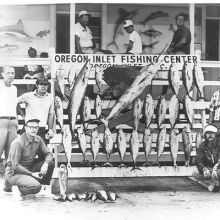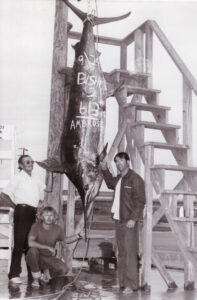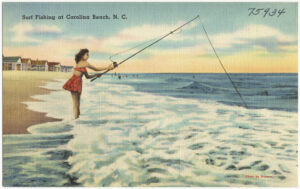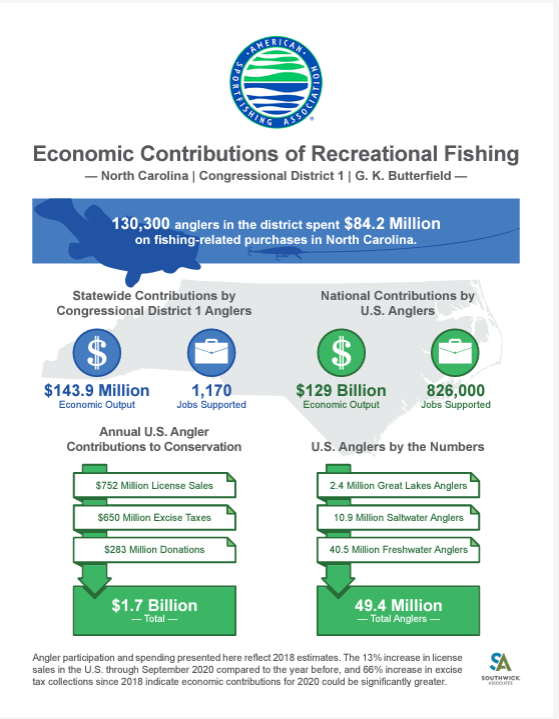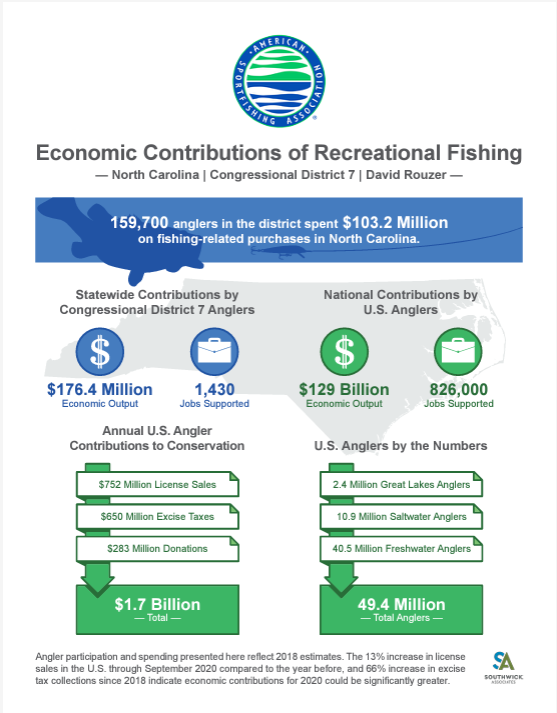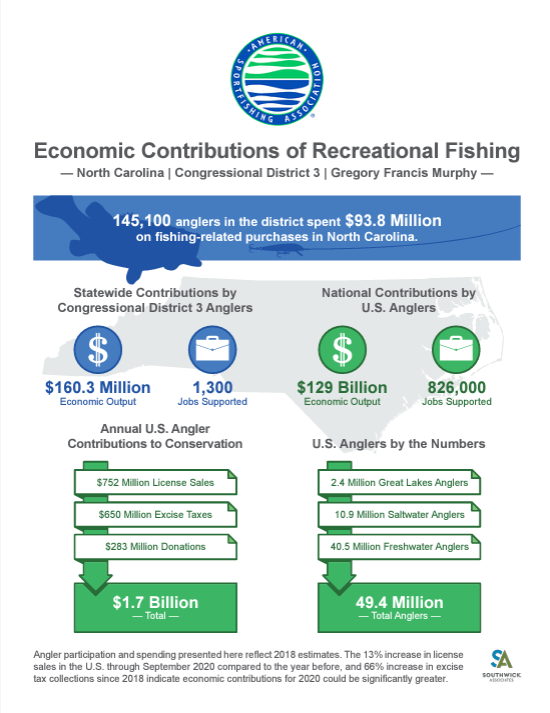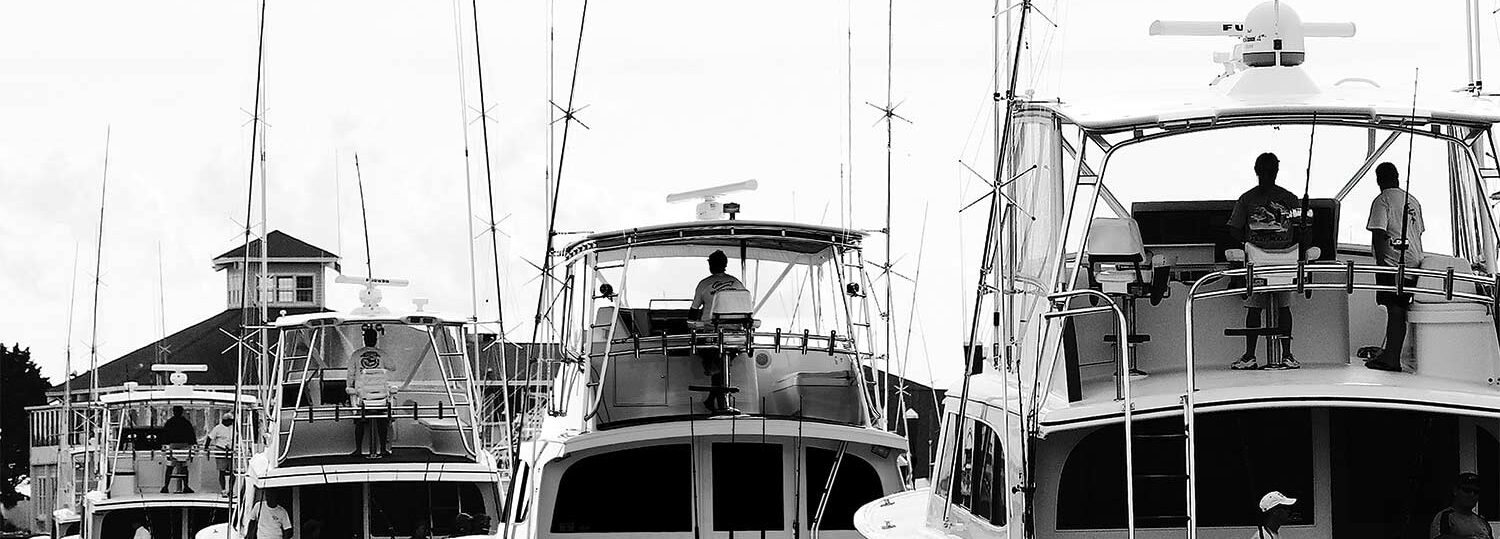
Recreational Fishing
The discussion of marine conservation would not be complete without recreational fishing. North Carolina has been a fishing hot-spot for many years, with it’s combined coastal shoreline of 12,331 miles (estuarine and coast). Millions of visitors and residents come to the coast every year to relax and recreate; fishing being one of the most popular activities. The volume of people participating, ranging from casual to major tournaments, has a major impact on the marine environment and the decisions made related to conservation.
Recreational fishing is a term that describes all types of fishing that is not done for commercial purposes or for financial gain. It applies to both fresh and saltwater bodies. This encompasses types such as:
- Offshore
- Flyfishing
- Surf Fishing
- Trolling
- Pier Fishing
North Carolina’s Division of Marine Fisheries (under the Department of Environmental Quality) specifically defines recreational fishing in Article 14B “Coastal Recreational Fishing Licenses”:
- “Recreational fishing” means any activity preparatory to, during, or
subsequent to the taking of any finfish, the taking of which is subject to
regulation by the Marine Fisheries Commission, by any means if the purpose
of the taking is to obtain finfish that are not to be sold. “Recreational fishing”
does not include the taking of finfish by a commercial fishing operation…
Below is a WNCT news report on NBA legend and UNC graduate Michael Jordan, who is an avid sportfisherman and regularly participates in NC’s tournaments. Most notably, the Big Rock tournament in Morehead City for marlin.
Read on to find out more about recreational fishing.
History of Fishing in NC
Fishing itself has been a part of human history for a long time. It is estimated that our early ancestors first began gathering fish some 40,000 years ago, using crude tools or their hands. By 3500 BCE, the Egyptians had created the spear, line, net and rod; which subsequently spread throughout the world, while similar inventions popped up as well. In North Carolina, Native Americans that lived in the coastal region utilized underwater nets called “weirs” and spears to catch fish for subsistence.
- Recreational fishing as a sport, rather than for survival, started to emerge around the 1930s as outdoor recreation as a whole gained popularity with the American public.
- In Hatteras, wealthy tourists could pay to go out on a charter boat and participate in what was called “angling” (angling is another word for sportfishing, often used to describe the catching of bigger fish).
- As a whole, fishing was less developed as a recreational activity than was hunting.
- The first public fishing pier in NC was opened in 1923, at Kure Beach. This provided cheap access to waters beyond the surf, regardless of season or weather. Other coastal towns soon followed.
- By WWII, North Carolina was beginning to gain reputation for having large blue marlin and sailfish; the first having been caught by charter boat owners Ernal Foster and Hugo Rutherford.
- After the war, more commercial fisherman began converting their boats into charters for the summer tourist season. The first “Carolina-style” boats also started to hit the shores, providing the affluent a way to enjoy offshore fishing.
- Advancements in fishing gear technology and the use of cheaper, easier to manufacture materials, eventually made recreational tackle more affordable and widespread.
- Today, millions of people visit NC’s coasts to engage in recreational fishing, via shore, boat, or pier.
Economic Significance
- Based on 2018 estimates by the American Sportfishing Association, 2,263,900 anglers spent $1.4 billion while engaging in recreational fishing in North Carolina. Statewide, they contributed $2.5 billion in economic output, and supported 20,740 jobs. Below is a breakdown of their contribution to conservation:
- $742 million in license sales.
- $650 million in excise taxes.
- $283 million in donations.
- $1.7 billion Total
- Graphics below represent the economic contributions of NC Congressional Districts 1,3, and 7. Districts 3 and 7 encompass the entire coastline, as well as part of the sound between the Outer Banks and the mainland. District 1 is included because it contains a significant portion of the Albemarle Sound.
- Click here to view NC’s congressional districts.
- Of significant note is the tourism industry in the Outer Banks, specifically Dare County. While not all of the economic figures are from recreational fishing, it is a huge draw for visitors to this area.
- In 2018, Dare Co. set a new record with $1.8 billion spent in year.
- The Cape Hatteras National Seashore saw 3 million visitors in 2021.
- Jeannette’s Pier in Nags Head, which is part of the NC Aquarium, has seen 1.75 million visitors on the pier itself (which is a major fishing location) and 4.5 million to the site over the 10 years it has been open. In these 10 years, they estimate it has had a $53 million economic output.
Environmental Impacts
- Because of the number of people engaging in recreational fishing every year on the coast, environmental impacts are to be expected. This includes direct impacts, such as harvest of fish species, or indirect from visitation itself.
- j
- j

